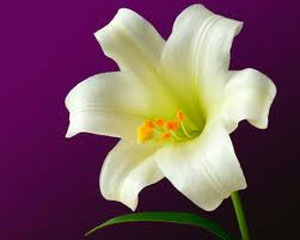Day Lilies Flowers
Though the day lily is a popular flower for gardens and floral arrangements, recently it has been reclassified from the Liliceae family (which made it a true lily) to the Hemerocallidoideae family. Despite the reclassification, it is still known commonly as the day lily and will continue to be celebrated as a lily for purposes of gardening and floral arrangement. Reasoning behind the name “day” lily is the fact that these elusive but delightful flowers only last for roughly twenty-four hours. The day lily will typically bloom at sunrise and wilt at sunset only to be replaced by another flower off of the same stalk the next day. Ironically enough, some day lilies bloom over night! Since new flowers will continually grow on a healthy stalk, these flowers have been used for floral arrangements for a long time.

Where Day Lilies Are Found Wild
Day lilies are native to Eurasia but are most commonly found in regions of China, Korea and Japan. Because the flowers petals are large and extravagant, these flowers have become a mainstay for gardens across the world. The day lily is also very resilient to cooler temperatures and varying soil pH levels, which makes it ideal for beginner gardeners. Accounts of lilies date back thousands of years in Asia and can be identified because of their three petal, three sepal structure with midribs that differ in color from the rest of the flower. Six stamens are usually found jutting out from the center of the flower and each stamen has a duel-lobed anther.
More Than Just a Decoration
While day lilies are predominantly known as attractive additions to floral arrangements, some cultures revere the plant for both culinary and medicinal use. For example, in China, dried or fresh flower petals of some species of day lilies can be purchased for cooking. Asian marketplace workers will know the ingredient as “gum jum” or “golden needles”. Some Chinese recipes for hot and sour soup will make use of golden needles as well as recipes for Buddha’s delight and mooshu pork. Though some varieties of day lilies are used medicinally, there are toxic species out there as well and an expert flower identification source should be used before ingesting any strange flowers. Unlike blowfish though, if you get your day lily petals from an Asian market, you can be assured that they will be safe to eat.
Species of Day Lilies
Day lilies are plentiful across Eurasia and there are many species beyond those listed here. For more complete lists make use of recent botanical reference guides as there are constantly hybrid strains being developed. One variety known as the Tawny day lily (Hemerocallisfulva) was brought from England to the US as far back as the 17th century along with the sweet-smelling Lemon lily (Hemerocallislilioasphodelus). Today, the Tawny day lily is common in many areas of the States; so common that it has caught a few nicknames including the Railroad day lily and the Tiger lily.
